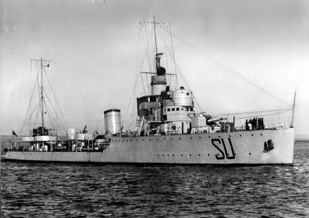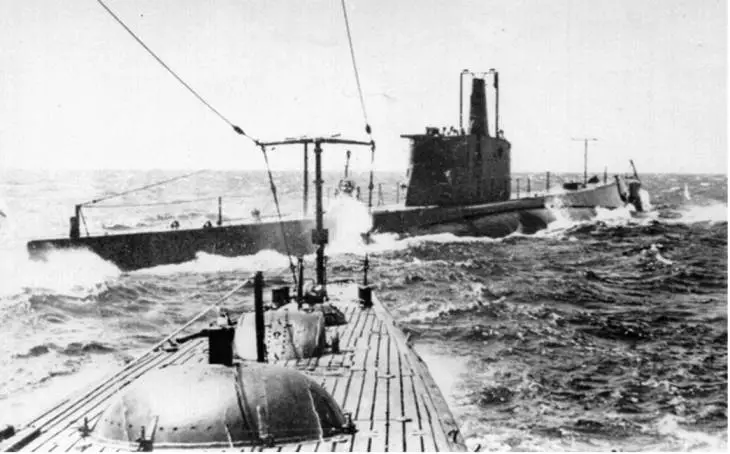Situation in 1940
When Italy declared war on the western allies, in June 1940, its East African empire suddenly became isolated from the motherland, unable to receive supplies nor reinforcements, exception made for some rare transport flights. Besides the land and aerial unit deployed in the colony, the Regia Marina was also present in the theatre with a small flotilla based in the Eritrean port of Massawa. The warships and submarines in this theatre fell under the East African Naval command under vice Admiral Carlo Balsamo and consisted of the following units on the 10th of June 1940:
Colonial patrol ship “Eritrea”
Auxilliary cruisers RAMB I and RAMB II
3rd Destroyer Squadron
Francesco Nullo
Nazaro Sauro
Cesare Battisti
Daniele Manin
5th Destroyer Squadron
Pantera
Tigre
Leone
Torpedo-Boats Detachment:
Giovanni Acerbi
Vincenzo Orsini
21st MAS Squadron
5 x MAS
8th Submarine Group
81st Squadron
Guglielmotti
Galileo Ferraris
Galileo Galilei
Luigi Galvani
82nd Squadron
Perla
Macalle’
Archimede
Evangelista Torricelli
Auxiliary Units:
Gunboat Porto Corsini
Gunboat Biglieri
Mine-layer Ostia
Oil Tanker Niobe
Water Tanker Sile
Water Tanker Sebeto
Water Tanker Bacchiglione

Destroyer Nazario Sauro
The red sea flotilla was indeed a modest force, barely capable of patrolling the Eritrean waters and slightly able to threaten the allied supply lines across the red sea with its submarines. However, fuel and spare parts were available in limited quantities and the vessels deployed there were quite obsolete. The destroyers of the Leone class (5th squadron) had entered service in back 1924, originally designed as “fleet scouts” and later downgraded to destroyers. The Sauro class units (3rd squadron) were also from the 1920s and belonged to the early generation of post-war Italian destroyers, thus having stability and propulsion issues.
The situation was better for the submarines, all of them built in the 1930s, and six of them capable of oceanic operations. However, as all Italian submarines, they suffered from various technical issues and design flaws. For instance, they lacked modern launch control systems, the time needed for submerging was above the average, the electrical and refrigeration systems were often prone to malfunctions, issues that worsened in the hot and humid African climate.
Submarine Operations
Once Italy declared war on the allies, between the 10th and the 21st of June 1940, all the available submarines left Massawa to attack enemy shipping in pre-determined areas.
The Maccalle was lost on the 15th of June, due to a navigation error and the toxic leaks of methylene chloride. The Submarine ended up on a shallow and rocky seabed, this forced the crew to abandon the vessel. Malfunction to the refrigeration system caused methylene chloride leaks and several crew members, breathing the toxic gas, started to show signs of madness. The whole crew transferred to a little island nearby and prepared a small dinghy equipped with a sail. Three crew members departed on the dinghy to seek rescue, led by midshipman Elio Sandroni. The three succeeded in their risky mission and the whole crew was rescued on the 22nd of June.
In the same days, the submarine Galilei had sunk the Norwegian oil tanker James Strove but, on the 19th, came under attack from the Gunboat Moonstone. The commander decided to surface and attack the British warship with the deck guns. However, the Galilei got a hit, and two destroyers came in aid of the Moonstone, sealing the fate of the submarine.
A few days later, also the Galvani was lost. The submarine fell into an ambush and was at first hit by gunfire that opened a breach in the stern section flooding the torpedo compartment. Sailor Pietro Venuti sacrificed his life by sealing, from the interior, the door of the torpedo compartment and preventing the sinking of the unit. The submarine managed to re-surface but was finished off by enemy fire, causing 26 casualties. 31 men survived, likely saved by Venuti’s heroic action.

Galvani at sea in spring 1940
On the 23rd, also the Torricelli was lost in action, not without a heroic stand against superior enemy forces. On that day, the submarine crossed the Bab El Mandeb strait, getting back to the red sea. As for the Galvani, the Torricelli fell into an ambush, facing two gunboats and three destroyers. These two events make us think that the British knew somehow the positions or the operational zones of the Italian submarines, probably thanks to their spy networks in East Africa. However, the Torricelli faced in surface 5 enemy ships with its single 100mm gun. After a fierce fight, the badly hit submarine surrendered and the crew scuttled their unit. In the following hours, the British destroyer Karthoum sank due to an explosion of its torpedo, probably damaged by a gun hit of the Torricelli.
Talking of other relevant actions of the East African submarines, we can mention the sinking of the tanker Atlas by the Guglielmotti, in September 1940, not forgetting the incredible story of the Perla, treated extensively in a previous article.
Surface operations
The actions of the old destroyers based in Massawa were limited by the conditions previously explained, however, on several occasions, they ventured into the Red Sea to intercept enemy convoys, most of the time failing to intercept them. In October 1940, the two destroyer squadrons intercepted the convoy “BN7” and engaged gunfire with the escorting warships. However, the presence of the light cruiser HMS Leander forced the Italians to disengage, unable to face the superior firepower of a cruiser. In the escape, the destroyer Nullo suffered from engine failure and fell prey to the British warships.

The destroyer Tigre
Epilogue
At the end of March 1941, the situation in Italian East Africa was compromised and Commonwealth forces were advancing on all fronts. Rear Admiral Mario Bonetti ordered one last offensive action before sacrificing his warships. The destroyers Tigre, Pantera, and Leone (5th Squadron) were tasked to cross by night the Red Sea northwards and shell the Suez while the Sauro, Manin, and Battisti (3rd Squadron) would have attempted a similar action against Port Sudan.
On the 31st March 1941, the action of the 5th squadron was compromised when Leone got stranded on rocky shallow waters, not reported on the maps. The time lost in rescuing Leone’s crew forced the Tigre and Pantera to abort the mission, they had not enough night hours to reach Suez undetected. On the 3rd of April, the surviving 5 destroyers were sent to attack Port Sudan. The Battisti was lost on the route during an engine failure, the formation continued its approach towards the objective. At dawn, 19 miles from the port, they were sighted and attacked by British bombers. The Manin was hit and later scuttled by its crew, the rest of the formation withdrew and scattered in direction of the Arabian coast. Here, the Tigre, Pantera, Sauro, and Battisti were scuttled, and their crews were interned in Saudi Arabia.
The port of Massawa fell on the 7th of April 1941, before that day, the Auxiliary cruisers RAMB I and RAMB II and the colonial ship Eritrea escaped, attempting to cross the Indian ocean with the destination Japan. The RAMB I was sunk by British warships while the Eritrea and RAMB II arrived in Japan after an adventurous journey. Back in early March, the surviving submarines, Guglielmotti, Archimede, Ferraris, and Perla also escaped, making a long voyage around Africa and arriving at the submarine base of Bordeaux in May 1941.
Sources
Colombo, L. (s.d.). Tigre. Tratto da Con la pelle appesa a un chiodo : http://conlapelleappesaaunchiodo.blogspot.com/
Giorgerini, G. (1994). Uomini sul fondo.
Santangelo, A. (2020). La caduta dell’ Impero fascista.